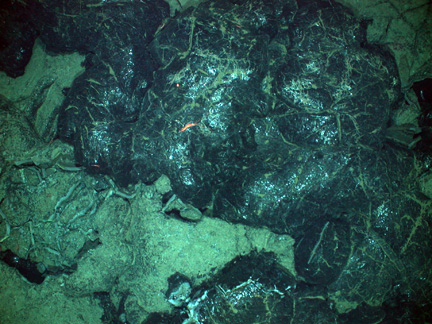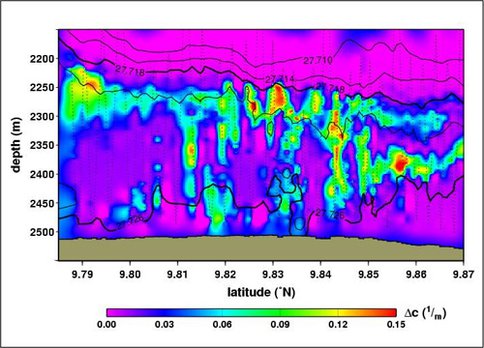2006 Annual Science Report
 University of Hawaii, Manoa
Reporting | JUL 2005 – JUN 2006
University of Hawaii, Manoa
Reporting | JUL 2005 – JUN 2006
Seafloor Eruptions: Access to Deep Hydrothermal Biosphere
Project Summary
This project is an on-going study of the microbial and geochemical changes associated with seafloor eruptions at mid-ocean ridges. The intrusion of a magma dike into the neovolcanic zone of a mid-ocean ridge is the “quantum” event in the accretion of the upper ocean crust. Such ridge axis diking/eruptive events are episodic perturbations that trigger a sequence of interrelated and rapidly evolving physical, chemical, and biological processes associated with the formation of ocean crust.
Project Progress
This project is an on-going study of the microbial and geochemical changes associated with seafloor eruptions at mid-ocean ridges. The intrusion of a magma dike into the neovolcanic zone of a mid-ocean ridge is the “quantum” event in the accretion of the upper ocean crust. Such ridge axis diking/eruptive events are episodic perturbations that trigger a sequence of interrelated and rapidly evolving physical, chemical, and biological processes associated with the formation of ocean crust. Volcanic activity produces hydrothermal discharge with a distinct geochemical signature, and triggers specific geochemical and microbial responses in the adjacent crust and overlying water-column. Significant change in a variety of processes take place over limited time spans. In effect, diking-eruptive events offer short-term natural “experiments” unachievable in the laboratory. Observing and quantifying co-variation among related processes provides basic new constraints on presently immature models of submarine volcano-hydrothermal systems.
This year we were able to respond to evidence of a recent eruption near 9°50’ N along the East Pacific Rise (EPR). UHNAI coInvestigator Cowen led the expedition as chief scientist and project PI. Two postdoctoral fellows from the UHNAI joined the research team. The expedition was able to:
Document the eruption of an extensive new lava flow using towed near-bottom digital camera (TowCam);
Document the presence of extensive anomalous particle/thermal/chemical plumes in the water column indicating the recent/ongoing discharge of massive amounts of heat and chemicals;
Sample new lavas and water column particles for subsequent chemical and microbiological (molecular) analyses. These analyses are ongoing.

-
PROJECT INVESTIGATORS:
-
PROJECT MEMBERS:
Andrew Boal
Postdoc
Brian Glazer
Postdoc
-
RELATED OBJECTIVES:
Objective 4.1
Earth's early biosphere
Objective 5.1
Environment-dependent, molecular evolution in microorganisms
Objective 5.2
Co-evolution of microbial communities
Objective 6.1
Environmental changes and the cycling of elements by the biota, communities, and ecosystems

